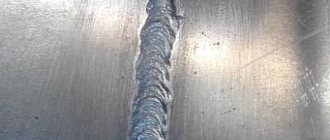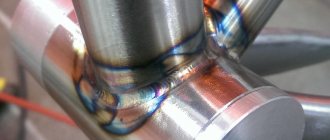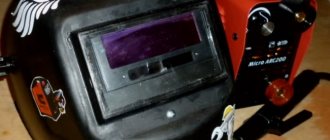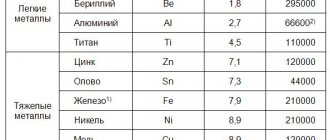The welding process is a hazardous type of work. Hands, face, eyes, and respiratory organs are at risk. Neglecting safety precautions rarely comes without unpleasant consequences: you can get a burn from welding if splashes of sludge or particles of molten metal reach you. The danger comes from heated welding equipment and used electrodes. There is a high probability of damaging the bronchi and lungs with harmful gases. Electric arc radiation is hazardous to the eyes.
Skin burn from welding
If you receive an injury, you must contact a doctor, but first aid to the victim can actually be provided at the workplace.
Types of welding burns and degree of damage
Radiation
Getting facial burns from welding is possible from the ultraviolet radiation of the electric arc. It affects the skin; any unprotected areas can be affected: hands, face. Possible symptoms:
- slight redness, itching (tan from welding);
- redness of the cheeks, eyelids, itching, pain when touched (I degree);
- the appearance of blisters of different sizes filled with liquid (II and III degrees).
Eye burns do not appear immediately, but 5–6 hours after welding. There are different degrees of severity of damage to the eyeballs and mucous membranes (sclera):
- mild is manifested by the appearance of pain in the eyes;
- medium, at stages II and III – slight clouding of the cornea, the formation of a thin film on the sclera;
- severe - roughened edges of the sclera, drying of dense film crusts to them, obvious turbidity of the cornea;
- super-severe – deep injury to the eyes and retina.
Chemical
In enclosed spaces, when gases released during the welding process accumulate, damage to the mucous membranes of the upper respiratory tract, nose, and eyes is possible. Main harmful factors:
- nitrogen dioxide and nitrous oxide;
- chlorine;
- carbon monoxide (carbon monoxide);
- fine melt fraction;
- ozone.
What not to do if you get a welding burn
When serious burns occur with the formation of blisters and deep damage to the skin, you need to seek medical help. If this is not possible, to prevent infection, the affected skin is disinfected. IT IS FORBIDDEN :
- Puncture any blisters that form. The liquid protects the skin from additional damage and works better than an antiseptic.
- Tear off the baked fragments of clothing stuck to it. Some alloys only melt the fibers, they turn into a sticky mass. If the clothes are torn off, the severity of the damage will increase. Such wounds get wet, become inflamed, and do not heal for a long time.
Welding burns are NOT treated :
- alcohol-containing liquids, as they irritate the skin, burn the wound, and increase pain;
- ointments and creams based on vegetable oils, they form thermal insulation of the affected area;
- all kinds of powders - they do not have any healing or protective effect and serve as an additional contaminating factor for the wound.
- Oil and creams are used in the process of restoring the dermis to protect young skin from the effects of atmospheric factors. The use of such means is strictly prohibited.
What not to do if injured as a result of welding work
When you have a burn to your face or any other part of your body from welding, you should find out what is strictly prohibited to do:
- Use vegetable oil, fatty creams or ointments. There are many recipes and fat-based preparations. Some of them, in rare situations, can really help, but not as a means of first aid. Initially, you need to talk with a doctor, establish the nature of the injury, and only then use such drugs. Fatty products create a film that does not protect the wounded surface at all; it blocks heat exchange with the environment, as a result - the skin heats up even more and the painful symptoms intensify;
- Some metals, for example, aluminum, when they come into contact with clothing, do not burn through it, but “melt” it and stick it to the skin. In such episodes, under no circumstances should you try to remove it; there is a high risk of damaging part of the upper tissues. This will cause serious consequences: formation of pus, inflammation, infection, necrosis;
- If you receive any burn, including from welding, do not use preparations containing alcohol. This will only provoke unnecessary irritation of already damaged areas;
- If you have already developed blisters, they should be seen by a doctor rather than opened. Such an action threatens external infection, the formation of purulent exudate and other complications.
First aid for burns
Depending on the degree of injury, a decision is made to call an ambulance. A first degree burn does not require emergency medical intervention. It is enough to apply something cold. In all other cases, while you are waiting for the doctors to arrive, you can alleviate the victim’s condition. Authorized first aid:
- Treatment of the wound with special means, these can be anti-burn antiseptics, ointment for burns from the emergency kit (they contain bactericidal components and have an analgesic effect);
- Isolate the burned area with a dry gauze bandage.
After providing assistance, the victim must be given something to drink; for this it is better to use hot tea; cognac, up to 1 teaspoon per glass, can be used as a vasodilator. If the area of injury is large, it is necessary to take analgesics to avoid painful shock.
Further anti-burn therapy
How to treat a skin burn by welding of the 1st-2nd degree yourself at home:
- use any antiseptics and treat the affected area with them;
- products: Olazol, Panthenol, Solcoseryl;
- for blisters, use antibiotic-based ointments: Levomekol, Tetracycline;
- Zinc ointment has a drying effect.
If there is an infection or the wound is swollen, you should consult a doctor.
Self-treatment of radiation injuries is allowed. For this, folk remedies, painkillers (a weak solution of Lidocaine, Analgin) are used; they are available without prescriptions.
What to do if your eyes hurt from welding
When welding for 6-8 hours every day, your eyes get tired simply from the strain, since you have to concentrate on the process of welding. But the eyes can also become very sore after short-term electric welding, when the welder “picked up bunnies.” In professional circles there is still an expression: “I ate hare meat.” This means that a flash from an electric arc hits the cornea of the eye. For a moment everything turns white, as if a white hare ran before your eyes. Although it sounds funny, it is serious. Let's look at the causes and symptoms of damage to a welder's eyes, first aid methods and subsequent treatment.
In this article:
The cause of eye pain after welding is not the bright light of the welding arc itself, but the ultraviolet rays emitted. Inflammation of the cornea is called electroophthalmia. The cornea is located first in the eye structure, so it receives most of the harmful radiation.
Ultraviolet light penetrates the eyes for the following reasons:
- There are few sensors in the mask. Budget masks have two sensors that trigger an arc flash. If these sensors are accidentally covered with your hand or the product itself, the crystals will not work.
- Poor quality chameleon mask. Cheap masks may not work well: while stitching, the darkening may disappear and the mask may “blink.” This is due to both poor battery power and a cheap filter.
- Work alone. When using a regular mask and assembling metal structures without an assistant, the welder often has to hold the part with one hand and the torch with the other. Often, tacks are placed without a mask in order to accurately see the location of the arc. I didn’t have time to close my eyes in time - I caught a “bunny”.
- Close work of two welders. When two welders weld next to each other, it is inevitable that UV radiation from the adjacent arc will enter the eyes.
Symptoms of damage:
Usually, pain in the eyes after welding does not occur immediately. The effects of UV damage occur at night. A person feels:
- pain;
- feeling as if the eyes were filled with sand;
- burning;
- rare white threads of conjunctivitis are visible;
- against the background of the white eyeball, red inflamed blood vessels are clearly visible.
All this is a mild inflammation that does not require visiting a doctor and can be treated at home.
Serious corneal lesions are divided into three degrees, which determine first aid and treatment methods.
| Burn degree | Manifestations |
| Medium severity | In addition to the above symptoms, sensitivity to light is added. The eyelid may swell. Numerous threads of conjunctivitis are visible. |
| Heavy | Corneal erosion begins and vision deteriorates. |
| Extremely heavy | The eyelids are so swollen that they cannot be opened, the cornea has become faded and colorless. Necrosis of eye tissue is observed. Blindness may occur. |
Treatment
For burns of moderate and extreme severity, medical treatment is prescribed by a doctor, which is aimed at three goals:
- Stop the inflammatory process. Antibiotic eye drops are used. They prevent neighboring tissues from becoming inflamed in a chain reaction.
- Pain relief. The drugs are available in the form of drops. They are buried to relieve the feeling of sand and pain.
- Relieve swelling and remove germs. Release form: drops. Apply three times a day. Significantly speed up the healing process;
| Direction of treatment | Group of drugs |
| Elimination of the inflammatory process | Antibiotics, antimicrobials, NSAIDs |
| Anesthesia | Ophthalmic anesthetics |
| Relieving swelling, removing germs | Eye drops with vasoconstrictor effect |
First aid
Even before contacting a doctor, you can provide first aid to the victim or yourself. The eyes are examined for the presence of foreign bodies. This could be scale or slag flying off during welding. They are easy to miss against the background of general pain. If a foreign body is present, it is removed with a sterile bandage. The swab should be passed from the corner of the eye to the bridge of the nose.
If your eyes are affected by ultraviolet radiation from welding, you need to give them rest. The victim needs to lie down and apply a cold compress to the closed eyelids. This can be a bandage soaked in clean water. Gels can be used for pain relief. If the burning sensation is severe, you can apply anti-conjunctivitis ointment behind the eyelid. They contain antibacterial ophthalmic agents with a wide spectrum of action. After this, the doctor examines the eyes and prescribes treatment in accordance with the severity of the burn.
Absolutely not! Rub your eyes with your hands, provide first aid with dirty hands, rinse your eyes with tap water (it contains chlorine particles and rust).
Folk remedies
Folk remedies are applicable for minor burns, when the eyes are cut at the end of the day, before bed or at night. Experienced welders know that in this case you need to cut raw, pre-washed potatoes and place the cut halves on your closed eyelids. Potato juice will soften the pain and cool sore eyes, reducing the temperature.
The second folk remedy is tampons soaked in chamomile decoction. The herb can be bought in a bag at the pharmacy and brewed. When it cools down, moisten the bandages and apply to closed eyes. Chamomile is a natural antiseptic.
Prevention
When your eyes hurt after welding, it is very unpleasant, but now you know what to do in such a situation. Even better is to prevent ultraviolet rays from reaching the cornea. To do this, follow these simple safety recommendations:
- Always cook with a protective mask. If you need to hold a large structure to grab it, ask someone to help, don't do it all alone.
- When several welders are working close to each other, agree to use the phrase “eyes” every time one of you starts welding. This will serve as a warning to the second one and he will have time to turn away.
- Install protective screens between welding stations. If there are no special screens, pull the cable and hook non-flammable fabric material onto it. If there is no cable, place a sheet of slate, metal, or asbestos between the welders’ work stations.
Individual protection means
In terms of eye protection, the choice of the welding helmet itself is important. Although PPE with a permanently dark filter is cheaper, you can’t buy vision at any price. Use chameleon masks from the very beginning of your welding career.
But the mere presence of a welding helmet with a self-darkening viewing window does not guarantee the absence of “bunnies”. It is important to choose the right PPE, ensuring complete eye protection. To do this, pay attention to the following characteristics.
Number of sensors HideRead more
Cheap masks have two sensors that respond to an electric arc. In more expensive ones, manufacturers place three, four or five sensors. For example, the BARSVELD MS 307 PREMIUM mask with ASF-777 has such functionality. What does this give? When welding is carried out in cramped conditions, the sensors may accidentally be blocked by pipes and other obstacles lying in front of the welder. If there is no direct contact with the arc light on the sensor, the crystals will not fire. If there are 4 sensors, even if one or two are closed, the others “catch” the arc and the mask works properly.
Darkness level HideRead more
Some chameleon masks can only darken the filter up to 11 DIN. When working indoors at currents up to 200 A, this is enough. But outside in the sun and welding at currents of 300-400, your eyes will quickly get tired of the bright picture. For these conditions, choose a chameleon with a 13 DIN shade rating, like the Speedglas 9100V welding helmet or the ESAB A20 welding helmet.
Grinding mode HideRead more
When work involves periodic alternation of welding and grinding, use a mask with a 3-4 DIN shade in a clear state. This will allow you to clean the seam without removing the welding helmet. At the same time, the grinding mode will provide protection from UV rays from the adjacent welding station. The OPTREL e684 welding mask has this function.
Visibility HideRead more
Sometimes welders are forced to take off their mask and weld without it when they cannot see the joining area. This happens in basements, under a car, where a large helmet does not allow you to turn your head for convenient control of the suture. Without a mask, welders simply close their eyes, but through half-open eyelids or without having time to blink, they “grab bunnies.” If you often have to cook in such inconvenient places, use masks with an enlarged viewing window of 100x60 or 100x90 mm, such as OPTREL Vegaview 2.5 or BARSVELD MS 307 PREMIUM with ASF-777.
Manufacturer HideMore details
When choosing a mask, the manufacturer is important. Inexpensive Chinese models may have an impressive set of characteristics, but they are just a marketing ploy. To ensure that the chameleon’s parameters correspond to reality, buy masks from trusted brands: ESAB, BARSVELD, Optrel, Fubag.
Power supply for the filter HideRead more
The crystals work correctly when the necessary energy is supplied to the processor. The mask contains batteries for this purpose. When they sit down, the blinking starts. Use battery- and solar-powered chameleons. Then the batteries will be recharged while welding. Find the right solar panel mask for you in the welding helmets catalog.
The masks will gradually wear out, the filters will scratch and break. You can always select a self-darkening cassette with the desired degree of darkness here, which will eliminate the need to purchase a new mask.
Video source: Doctor Komarovsky
Answers to questions: what to do if your eyes hurt from welding?
Which arc light is more dangerous for the eyes (from RDS, TIG, MIG welding)? HideMore details
Any electric arc emits ultraviolet and infrared light, so all types of welding create a risk of corneal burns. There is no difference in this.
What is the optimal filter darkening? HideMore details
If only the arc light and a speck of the weld pool are visible through the mask, this is bad. It's so easy to skip the joining line and stitch it past. When the edges of the desktop and all the contours of the part are visible through the mask in a dark state, this is also bad, your eyes will quickly get tired. It is optimal that the arc and the joining line are visible within 8-10 cm. This is enough to navigate during welding.
Is it possible to “grab bunnies” through closed eyelids when you hold the part and grab it yourself? HideMore details
Welding work should only be carried out while wearing a protective mask. The skin of the eyelids slightly blocks ultraviolet radiation from the eyes, but suffers from it itself. The eyelids may become inflamed and puffy. It is not always possible to close your eyes in time, so corneal burns with such methods are common. Try to secure the parts using clamps, clamps, or magnets to cook in a mask. As an option, buy a chameleon mask, then you won’t need a second hand to raise and lower the helmet.
Yesterday I picked up bunnies, can I cook today? HideMore details
If you got sunburnt on the beach yesterday, is it worth sunbathing today? The answer is obvious. A burning sensation in the eyes is a sign of a corneal burn, and the damaged delicate tissues need to be restored. Try not to strain your eyes for at least one day.
My mask is “blinking”, letting flashes of light pass through, what should I do? HideMore details
Most likely the battery is exhausted. Replace it. If batteries powered by a solar panel are installed, place the mask on the welding table and electric weld at a distance of 40-50 cm from the helmet, wearing another mask. This will recharge the batteries. Wipe the sensors with a clean cloth. If all of the above does not help, replace the mask.
There are still questions
Leave your contact details and we will contact you shortly
Feedback
Return to list
How to avoid getting burns when performing welding work
In order to avoid injury, it is necessary to adhere to safety rules during work and use personal protective equipment:
- jacket and trousers made of thick fabric;
- special leggings made from natural materials;
- welder's shield, it will protect the face from radiation and thermal injuries, save the eyes from ultraviolet radiation; There are special shields with forced air supply, they are used in enclosed spaces.
Types of welding burns
Welding burns to the skin and eyes are considered dangerous injuries that can lead to serious complications. For this reason, before starting work, it is important to prepare thoroughly; the person must put on all personal protective equipment, protect his eyes, hands and other parts of the body from sparks.
Note! When welding, the eyes can be especially damaged. If the organs of vision are not protected, photophobia, deterioration of vision, the appearance of a white veil, and a strong burning sensation will subsequently appear. You must use a special mask and safety glasses.
Welding burns are divided into types:
- Thermal. It is formed under the influence of heat and elevated temperature.
- Light. The burn occurs from the action of ultraviolet radiation. It can severely damage the eye membranes. If welding is not used during work, it appears instantly, but with the presence of a protective agent it can develop gradually.
- Chemical. Damage occurs if caustic smoke (evaporation from zinc, hydrogen fluoride, nitrogen dioxide) is released during welding work. In rooms, it can affect the mucous membranes, the bronchi and lungs are especially affected.
- Multifactorial damage. This type is accompanied by tissue damage when exposed to several welding agents at the same time.
Thermal and chemical welding burns often occur, which cause serious damage to the skin. If a spark hits a surface, it can cause not only a burn, but also a severe wound. And if treatment is not carried out immediately, then later you may encounter severe infection, inflammation, all of which can lead to the appearance of pus.









